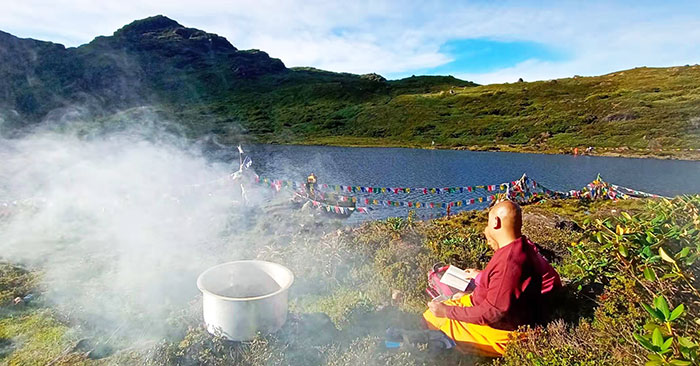Choki Wangmo
Visitors to Nub Tshonapata in Haa should seek a route permit from Jigme Khesar Strict Nature Reserve (JKSNR) since the area falls under the reserve.
It also set the number of visitors to the lake to 25 at a time.
JKSNR notified the public recently and stated the requirement is in line with the provisions of Forest and Nature Conservation Rules and Regulations, 2017.
Section 271 of the rules and regulations ensure appropriate waste management strategy in the park areas. “Any violation of the rules will be dealt seriously,” the notification stated.
JKSNR’s chief forestry officer, Sonam Tobgye, said they maintained records of people visiting the lake in the past one and half year and it was observed that the number of visitors increased in recent days.
This, he said, had impacted the biodiversity, particularly from littering and overcrowding. “We are conducting a long-term impact study of visitors on plants and wildlife. There were trampling and disturbances in the area.”
The trek, which consists of seven passes, takes three days to complete.
However, the visitors or tour operators can send the information like date of visit, number of people, and visitor information through an email to JKSNR.
The decision is well received by trekkers.
A tour guide, Phub Tshering, who arrange tours to the lake said that the initiative was good because the concerned authorities can monitor visitors to the area.
“It would help in reducing waste management issues along the trekking routes,” he said. “In the past, we got permits from Haa dzongkhag. It was confusing since JKSNR did not have visitor information although trek was within its boundary.”
A trekker, Chencho Wangdi, said that in the past, the permit to trek in some parts along the trekking route was mandatory while in some areas, it was not required. “With uniform implementation of the new rule, I think we can address the increasing waste challenges along the route. Officials should ensure that people bring their wastes back.”
The permit, he said, would also help keep a record of the visitors and solve the problem of getting lost along the route.
Nub Tshonapata plays a significant role in Bhutanese history. The lake is famed for being a treasure trove from which Terton Sherab Mebar in the 12th to 13th century discovered religious items as treasures.
A cymbal discovered from the lake is one of the main internal sacred objects of Rinpung dzong in Paro. It is displayed to the public during the first day of the annual tshechu.


